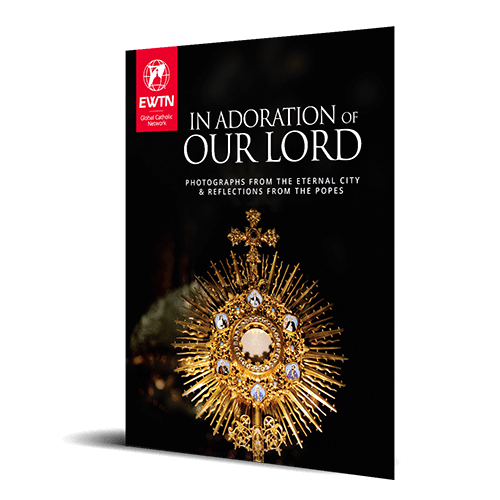Your Faith Journey with EWTN
As we deepen our relationship with the Eternal Word, Jesus Christ, we grow in grace and are transformed by His love and mercy.
Nov
09

This feast day celebrates the anniversary of the Dedication of Rome’s Lateran Basilica in 324 A.D. In that year, Pope Sylvester established his cathedral and residence on property given to the Church by the Emperor Constantine. As the Cathedral of the Bishop of Rome and the Pope, it is the highest-ranking church in the world.
The Lateranus family (the Laterini) had owned the property until it was confiscated by the Emperor Nero, who accused the family of conspiracy. From this origin, the place acquired the name the Lateran. It remained in imperial hands for 250 years until Constantine donated it to Pope Sylvester following the Edict of Milan in 313 A.D.
It was dedicated to St. John the Baptist and St. John the Evangelist, so the reference is to the two Johns associated with Our Lord. They became associated with the Basilica owing to the monks from the monastery of St. John the Baptist and St. John the Divine who served there.
After the Emperor Constantine legalized the Faith, he gave various imperial properties around Rome to Pope Sylvester for Church use. These included those of the Lateran and the Vatican. Upon the former, the Pope built his cathedral and residence. The Lateran was completed in 324 A.D., and although rebuilt over time, it has been in continuous service as the cathedra, or seat of authority, of the popes since then.
The Lateran Basilica is known as the “Mother of all the Churches of Rome and of the world,” as inscribed in Latin on the basilica’s facade. It is thus ranked first and most important of the four major basilicas in Rome, as well, and, owing to its preeminence, it is also uniquely an archbasilica.
The Lateran Palace and the Basilica of St. John Lateran are not the same. The basilica is the pope’s cathedral, and the adjacent palace was originally his residence. Although the Lateran Palace was used as a residence by the popes until the 1800s, the reunification of Italy in 1870 forced Pope Pius IX into refuge in the Vatican, which has remained the papal residence since. Today the Lateran Palace continues as the offices of the Diocese of Rome and where the pope’s Cardinal Vicar for Rome administers it in the pope’s name. Located there, as well, is Pontifical Lateran University, whose chancellor is the Cardinal Vicar.
There are four major papal basilicas in Rome. These four are the Archbasilica of St. John Lateran, St. Peter’s Basilica, St. Paul Outside the Walls, and the Papal Basilica of St. Mary Major.
There are two uses of the name basilica (from the Greek basileus – king). One is the honor given to a church by designation of the pope; the other is an architectural style based on the design of the ancient Roman law courts.
Historically, the ancient use preceded the Church’s use. The basilicas were designed to serve as the place where the emperor’s representative sat and judged. They were rectangular in shape with a central nave, at the end of which was a rounded area, the apse, in which the judge sat. Typically, there were two side aisles separated from the nave by columns. Many basilicas were given over to Church use by Constantine, as they were suitable for the public celebration of Mass. Many of these original basilicas survive, and new churches are still made in this style.
The pope, however, is the only one who can name a basilica in the honorific sense. The title is given to churches of significance to the universal Church, to a country, or even to a diocese. There are more than 1,800 basilicas in the world, with 85 in the United States. In Rome there are four major basilicas, the only ones in the Church, and numerous minor basilicas. The four major basilicas are also called papal basilicas and historically were called patriarchal basilicas.
A cathedral is the “cathedra” (chair) of the bishop of a diocese. The reference is to the chair or seat of apostolic authority in that place. It is therefore the principal church in a diocese. A basilica is a church honored by the pope for some notable reason.
The Holy Father can designate a church as a basilica based on the church’s history or architecture. Once a church is named a basilica, this is a permanent title.
A basilica may or may not be the cathedral of the diocese.
As we deepen our relationship with the Eternal Word, Jesus Christ, we grow in grace and are transformed by His love and mercy.
STEP 1